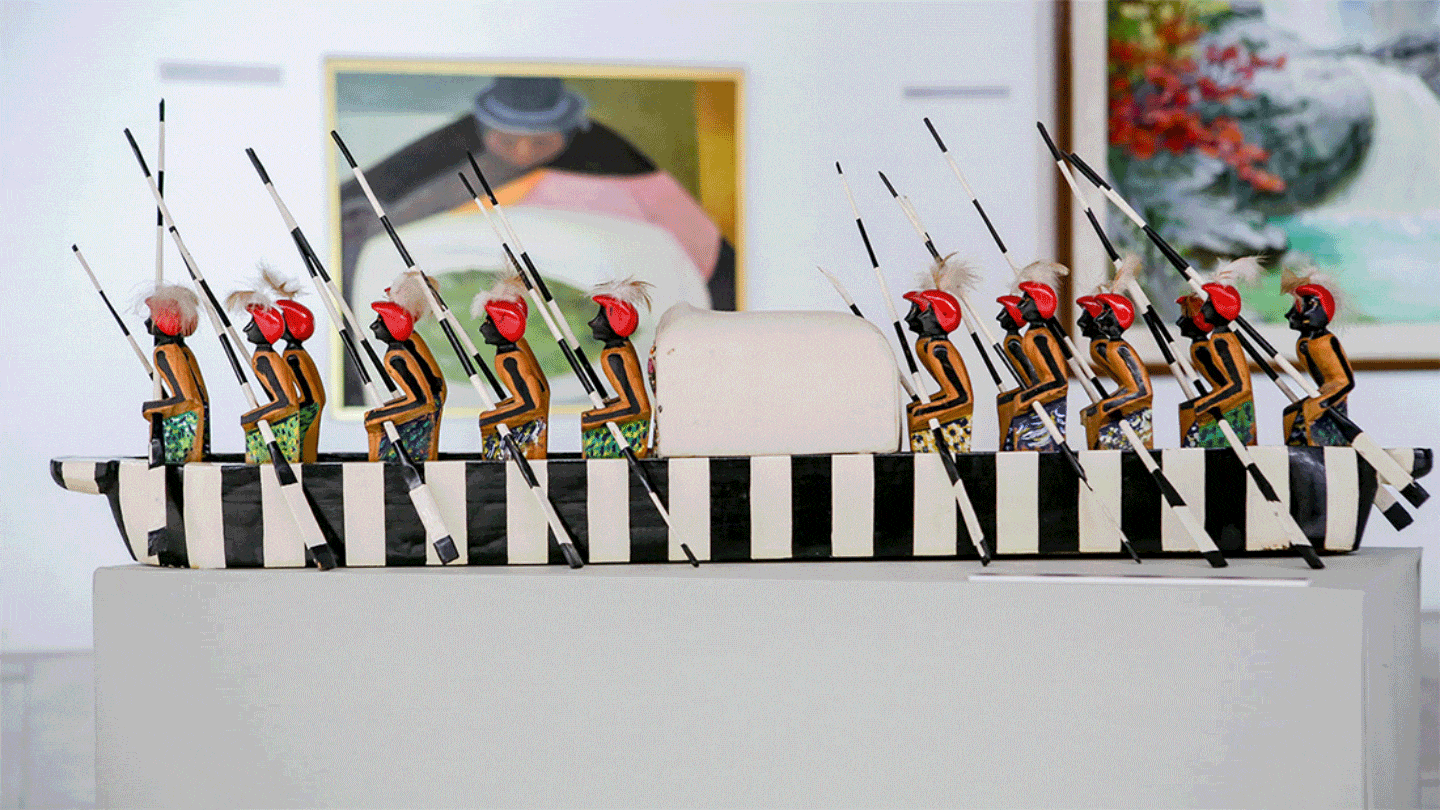February 28–June 4, 2023
Maistrova ulica 3
SI- 1000 Ljubljana
Slovenia
Maja Bajević, Guido Chire Balderrama*, Ana Bešlić, Jean-Marc Bustamante, Dante Buu, Jasmina Cibic, Documentary Embroidery Office, Dušan Džamonja, Róza El-Hassan, Cho Geumsoo*, Cristina Iglesias, Hristina Ivanoska, Mamdouh Kachlan*, Anish Kapoor, Liliane Karnouk*, Ivan Kožarić, Petar Lubarda, Jelena Micić, Rafikun Nabi*, S. Nandagopal*, Rabab Nemr*, Agnes Clara Ovando-Sanz de Franck*, Saleh Reda*, Naima El Shishiny*, Erzen Shkololli, Shukriya*, Gazbia Sirry*, Maja Smrekar, Ilija Šoškić, Marino Tartaglia, Ivor Thom*, Hambis Tsangaris*, unknown artist from Indonesia*, unknown artist from Palestine*, unknown artist from Zambia*, Lazar Vujaklija.
Curator: Bojana Piškur
* In collaboration with the Non-Aligned Art Collection Laboratory of the Center for Contemporary Art of Montenegro, Podgorica (Marina Čelebić, Anita Ćulafić, Nađa Baković, Natalija Vujošević).
Exercises in a Collection is an exhibition based on reflection about collections and their exhibitions. It puts forward the idea that works of art and their displays are not something static or permanent, with univocal meanings and ways of seeing, but that works of art need to be considered and thought about over and over, displayed in various ways, in diverse interrelations and concepts. In other words: a collection needs to be practiced. Over the last decade, discussions about collections and their exhibitions have become a significant part of contemporary museological practices. This of course entails more than just talking about the changes in their formal and conceptual aspects; it also requires looking back into their past, examining their history: what were the mechanisms that triggered starting a collection, which methodologies were used, what role did financial incentives play? Because collecting is not a neutral process, but is tied to various cultural policies, which are, for the most part, reflections of the ideologies of a certain time.
Historically, museums, and thus their collections, are associated with the Enlightenment, with the idea that works of art and knowledge about them are meant for everyone, and not just the aristocracy and the ecclesiastical elite. But such ideas were not without a dark side. Colonialism in particular made possible the possession of countless (art) objects from (former) colonies that are now kept in numerous Western museums. This process of acquisition was almost without fail a violent act, and at the same time a constitutive part of the process of amassing museum collections of non-Western artefacts at the time. It is only over the last few decades that the restitution of artworks to their places or communities of origin has begun in earnest. For a museum, however, this restitution process is not enough. The knowledge we have about art also needs to be decolonized, with the inclusion of different perspectives, narratives, and histories, many of which have been historically ignored. Another process that has been underway for a while now is the deconstruction of not only the idea of the universal museum based on positions of power, the unlimited accumulation of art from across the globe, and a patronizing definition of the “Other,” but also of the universal knowledge produced by such “imperial institutions.”
In non-Western parts of the world, museums approach the idea of collections and decolonization differently, above all with reflection on how to juxtapose their local histories and specific artistic expressions with their Western counterparts, but in a way that would allow an equal dialogue and preclude “epistemic colonialism.” One such example from our region is the pioneering international Arteast 2000+ collection, centered from its inception around the postwar Eastern European avant-gardes in the broader international context, and first conceived at Moderna galerija in the late 1990s by Zdenka Badovinac.
Our current, expanded exhibition of works from collections consists of three parts or three “exercises” in collections, with special emphasis on Moderna galerija’s international collection. The first part focuses on Yugoslavia’s cultural diplomacy, on the exchange and transfer of artworks between the Yugoslav republics, and on gifts or donations of artworks. After World War II, Moderna galerija acquired a small collection of works by Yugoslav artists in this manner. A special place in this section of the exhibition is dedicated to the cultural diplomacy of Yugoslavia and the non-aligned countries. It was particularly intense between the early 1960s and the late 1980s and resulted, among other things, in the founding of the Gallery of Art of the Non-Aligned Countries “Josip Broz Tito” in Titograd in 1984, which now works as part of the Center for Contemporary Art of Montenegro, i.e. as the Non-Aligned Art Collection Laboratory. Jasmina Cibic’s work The Gift (2021) gives the historical achievements of the former cultural diplomacy a contemporary accent.
The second part of the exhibition presents Moderna galerija’s Arteast 2000+ collection, and specifically sculptural works from the 1990s by the most prominent international artists of the time, constituting the beginning of the collection and relating to the idea of an East European collection in dialogue with Western works. The artworks were mostly purchased at solo exhibitions the artists had at Mala galerija, at the time Moderna galerija’s project space.
The third part of the exhibition comprises artworks acquired for the Arteast 2000+ collection in recent years, and works that in some way indicate the direction in which the collection might evolve in the future. In their works, these young and middle-generation artists from the region of the former Yugoslavia mostly address the topic of the work of female artists, with special emphasis on (traditional) handicrafts, the meaning of such a return to handwork today (in terms of the status of women in society, patriarchy, unpaid work, tradition − modernity), and the other histories and stories that these handicrafts relate.


